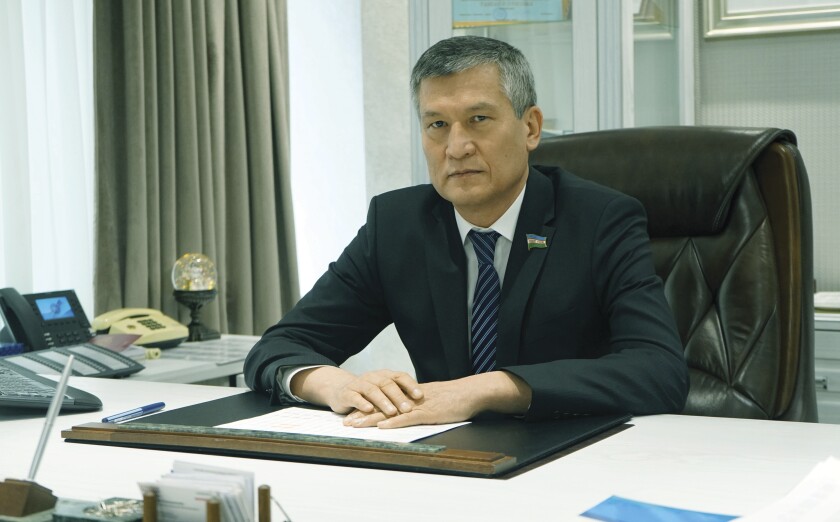GlobalMarkets: How are the government’s reform plans for the mining and metals sectors affecting Almalyk Mining and Metallurgical Complex (AMMC)?
Abdulla Khursanov, chairman, Almalyk Mining and Metallurgical Complex: Since 2016, under the leadership of President Mirziyoyev Uzbekistan has undertaken large-scale reforms covering almost all areas of the economy. Many of these have had a beneficial effect on AMMC. For example, the liberalisation of foreign exchange policy and reforms in taxation have allowed the company to strengthen its financial position.
The greatest changes for AMMC come from the reforms that specifically target the metals and mining sector. Between 2017 and 2020 there have been several Presidential Decrees specifically aimed at improving AMMC’s production capacity and efficiency. These will allow AMMC to increase production almost three-fold. For example, the production of copper will rise from 148,500 tonnes per year to 400,000 tonnes, gold from 17 tonnes to 50 tonnes and silver from 160 tonnes to 190 tonnes. AMMC will become the leading copper ore processor in the world.
GlobalMarkets: What kind of challenges are involved?
Khursanov: Many of the challenges will be due to the tremendous increase in production as a result of planned investment projects. The first challenge is water requirements, which will increase by two or three times to 450 million cubic meters by 2030. Similarly, energy requirements will increase five-fold, and the solution here is new state energy stations that will provide around 600MW of power. A third challenge is transportation issues. Today, we have one railway station that we rely upon for all our transportation needs. Of course, this isn’t enough, and so we are working with the Ministry of Transport and Railways and other authorities to construct new stations.
Yet another result of increased production capacity is an increase in concentrates, which contain a lot of sulphur. So today our operations produce around 800,000 tonnes of sulphuric acid, and in the future this will rise to 2.5m tonnes. The solution here is to create a system that can provide the sulphuric acid to Uzbekistan’s fertiliser producers. At present, a concept is being developed for the improved production of mineral fertilisers in conjunction with the production of sulfuric acid.
GlobalMarkets: What are the opportunities for international collaboration and partnerships across all AMMC operations?
Khursanov: The possibilities are limitless. AMMC is always open for cooperation and partnerships. Today, we export 18 types of products to more than 20 countries including Turkey, China, Switzerland, Germany and the Netherlands. We’re increasing our export markets and recently began exporting to Australia and Indonesia.
In terms of international science collaboration we are now working with the Korean Institute of Rare Metals (KIRAM) to create high quality products from metals like molybdenum, tungsten and rhenium. We are also cooperating with Russia’s TOMS Research and Design Institute, which develops technologies for the processing of oxidized ores, off-balance ores and industrial waste.
GlobalMarkets: What are the restructuring and privatisation plans for AMMC?
Khursanov: We are aiming to conduct an IPO in 2023, and are working with KPMG to prepare for the listing. There has already been an assessment to determine the fair value of our long term assets and the actual value of long-term social obligations in accordance with IFRS. The process of transferring non-core assets is underway. Our international auditor statements for 2019 and 2020 have already been prepared.
There is also a four-step roadmap that will see AMMC transform across a range of areas including corporate governance, IT systems, energy management and environmental and social protection. AMMC has a department for strategic development and transformation, which among other things will help us in converting financing statements from national finance standards to IFRS. We also now have a compliance and monitoring department that looks at financial risks.
In June this year S&P Global assigned us a B+ rating on stable outlook, and we’ve started to look into obtaining a second rating from Fitch. We expect that AMMC will be in a position to issue Eurobonds in the next few years, and have consulted JP Morgan and Citibank in this regard.
GlobalMarkets: What sources of funding does AMMC rely on, and how is this changing?
Khursanov: We use our own funds and credit lines, and of course funding from the Reconstruction and Development Fund of Uzbekistan. As a result of the reforms underway, we have been able to rely more on market funding. In 2020, with our rating from S&P, we were able to obtain our first direct soft loans from Russia’s VEB Bank to purchase dump trucks and Russian equipment. AMMC is alsoworking on attracting credit fundsfrom Gazprom Bank, VEB, SocieteGenerale, ICBC Standard Bank,Helaba and other leading banks tofinance development of the Yoshlik Ideposit.

